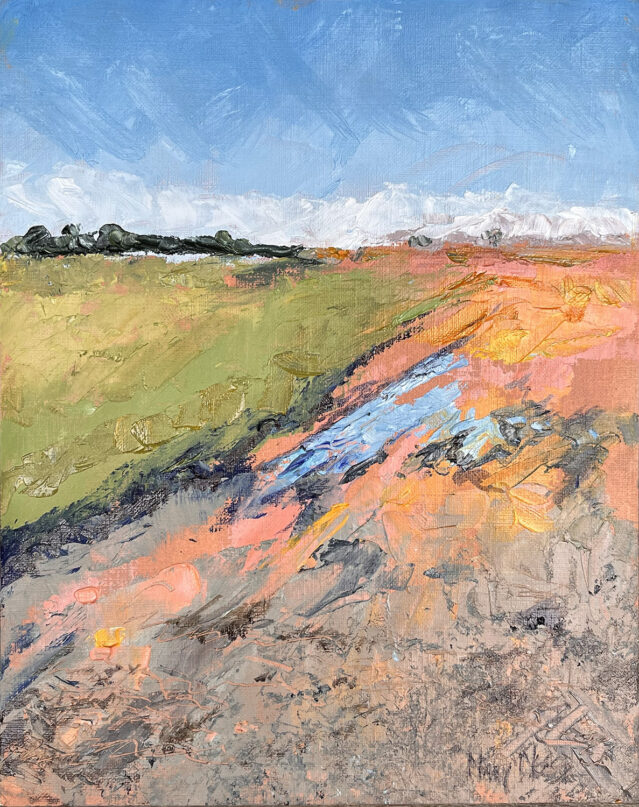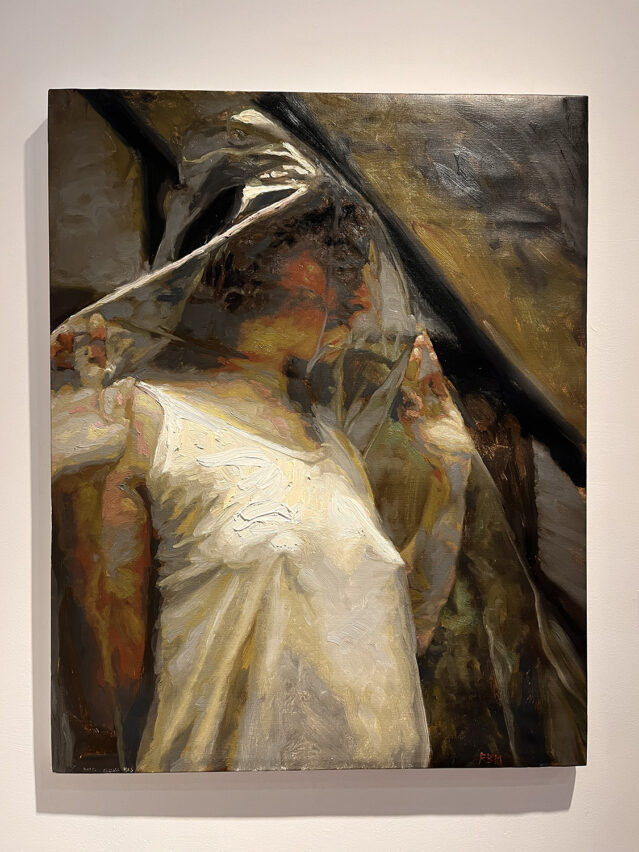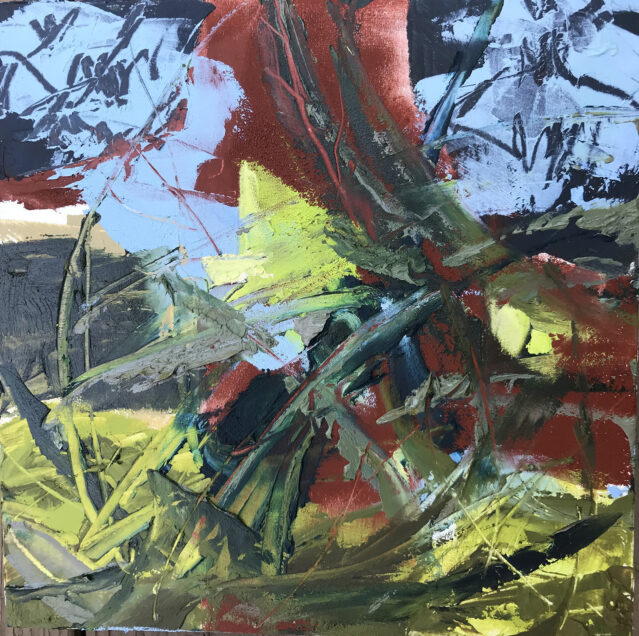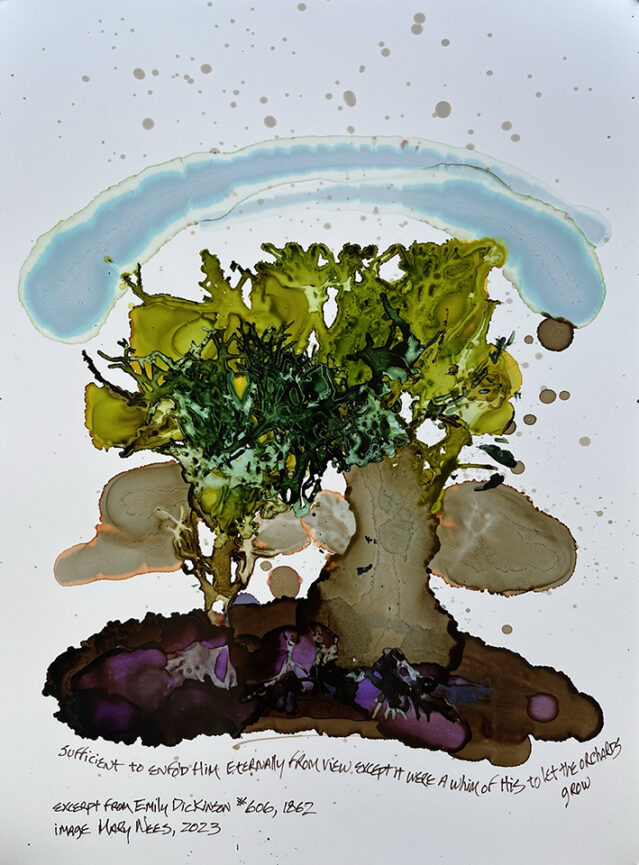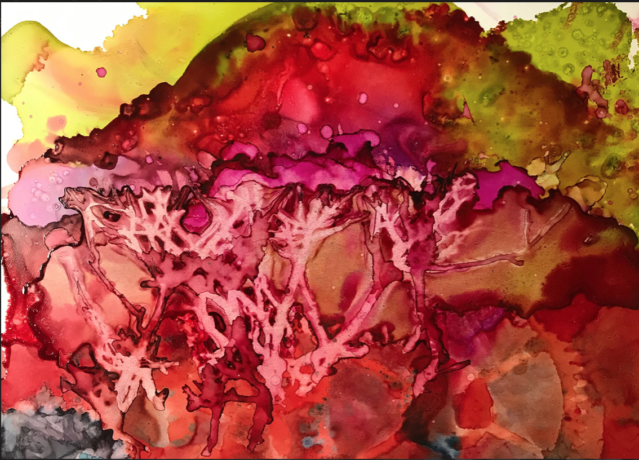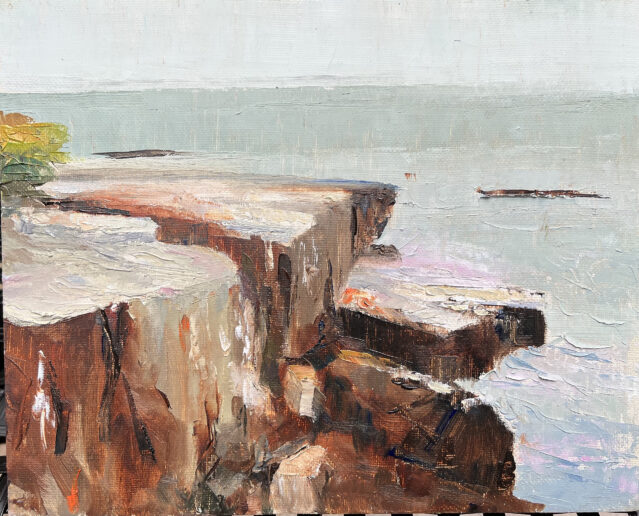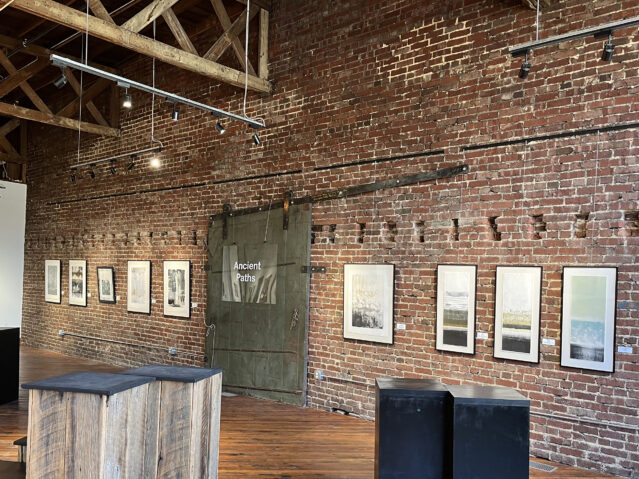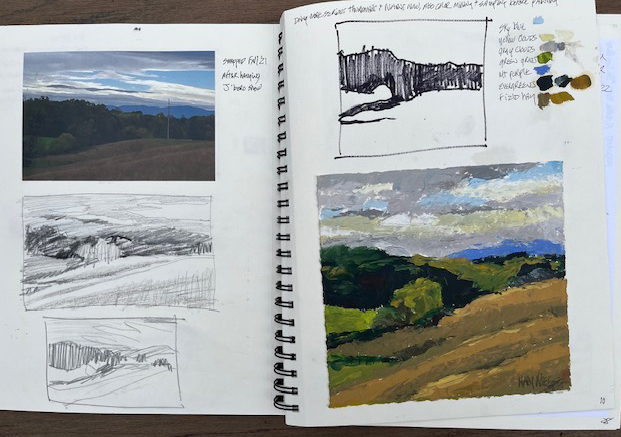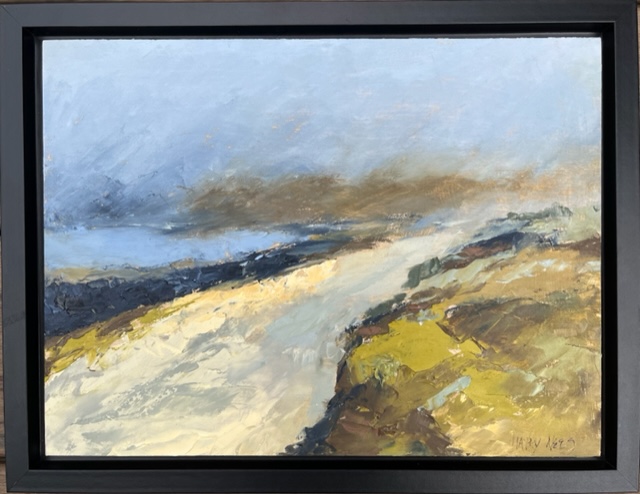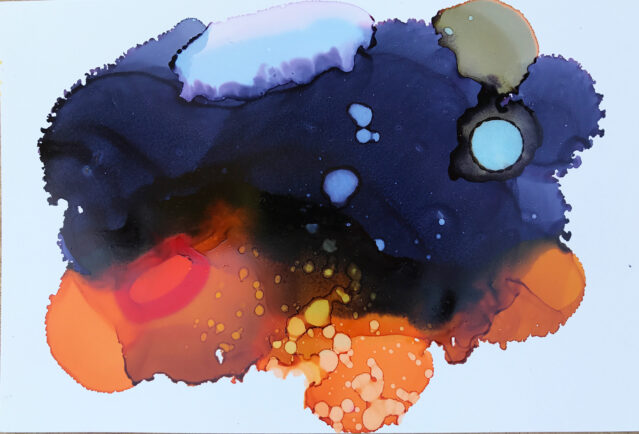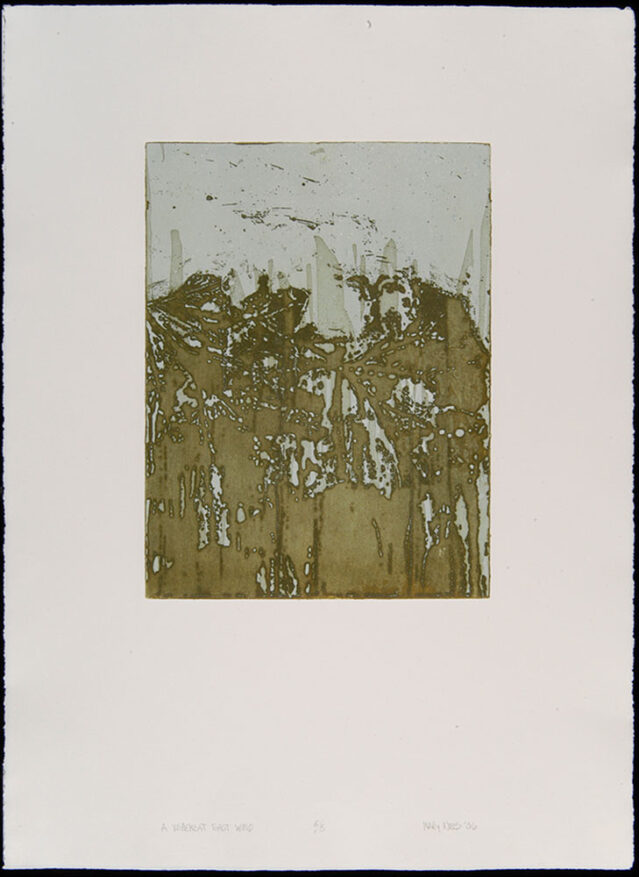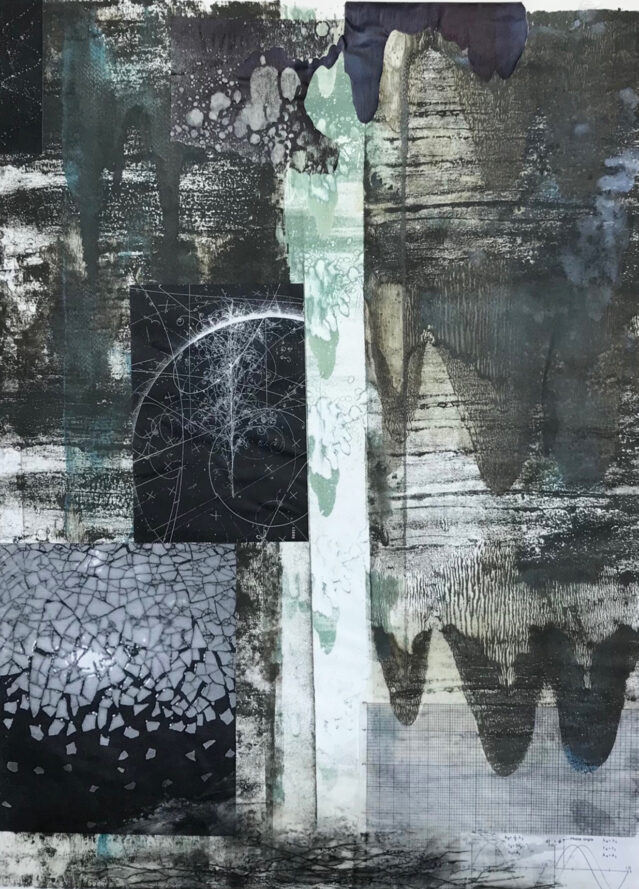Well, I just counted, and I have 555 photos I took in one short week, early March, during a teaching stint in Kenya. I have a visual collection of everything from students’ gorgeous smiles to interesting meals and village life, from handmade teaching visuals to the amazing fabrics the women wore. We saw Lake Victoria, the beautiful verdant tea highlands, the precarious motorcycle loads, the children walking to school in their differently colored uniforms in every town, the famous Tenwek hospital grounds, the Zebra patterns, and the contours in the vast Rift valley. But one photo of one moment is my very favorite. I attempted to replicate it here just last week; and let me explain why this moved me to get the paints and brushes out.
This is a simple reflection on a muddy road, late afternoon, close to Maasai land. We were in a big jeep which could handle the terrain. Exotic animals could turn up anywhere and it was an adventure at this point which is part of the feel, and then the contrast with this sudden, common, quiet beauty laid out before us on the road. Often, I can’t get my iPhone out fast enough when I see the moment, and yes there were better glimpses than what I finally could catch. Maybe that is why I wanted to try to memorialize the vision in paint.
Poet and Anglican priest Malcolm Guite asked in a lecture “what is the relationship between the knowable and the known?” I think he was musing on those things which are simple in front of us, made of matter which easily we understand — and also what these things can point to?
Maybe my own moment represented something known which I tried to semblance in paint. On a 10×8 paper panel, this is a reminder of a deeper thrust into my heart; possibly close to what Moses saw: an ordinary bush, burning in a known desert, yet the “bush was not consumed”.
Philosopher Owen Barfield asked about these things we tag, (and maybe too easily dismiss) by calling them metaphors. He said metaphors may well be more than just stand-ins for a presumptive idea. He asked, (considering bigger and more real things) “Is it really there?”. He said this was the first question and called these things we see “figurations”. He posited that poignant figurations were important. He also called them “forgetives” which was an old Shakespearian word, derived from the word “forge” describing something which has quick, forged and imaginative power. These forged impressions he said can be “the material manifestation of an immaterial unity”.
I am quite confident that immaterial reality shows up in unique moments because Solomon spoke of this which is knit deep in every human heart. We just need to be on the lookout. And so for me, on a muddy road with some wet ditches there was a bringing down of the sky’s brilliance. Vastness came to visit and laid down right before us into the dirt. It was beautifully striking, and for me a vivid picture of how God comes into our commonality. He is Light after all. But the Messiah who entered in, didn’t stay here on the ground. After doing His glorious visitation, and He left me a sign as an open door for response.
In the 19th c. Emily Dickinson selected words, in three separate fragments which catches this for me. I think she too was onto something.
“If I’m lost – now
That I was found –
Shall still my transport be –
That once – on me –those Jasper Gates
Blazed open –suddenly — (#256a)
“A transport one cannot contain
May yet a transport be –
Though God forbid it lift the lid –
Unto its Ecstasy! (#184a)
Oh Sumptuous moment
Slower go
That I may gloat on thee –
T’will never be the same to starve
Now I abundance see – (#1125a*)
*Dickinson’s excerpts are from Johnson’s Chronolgy
